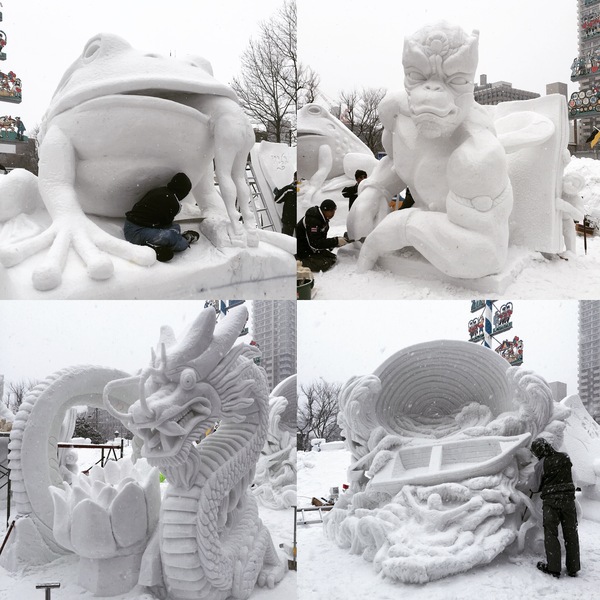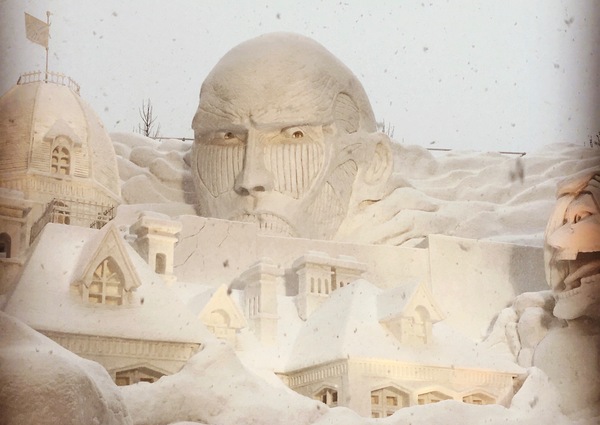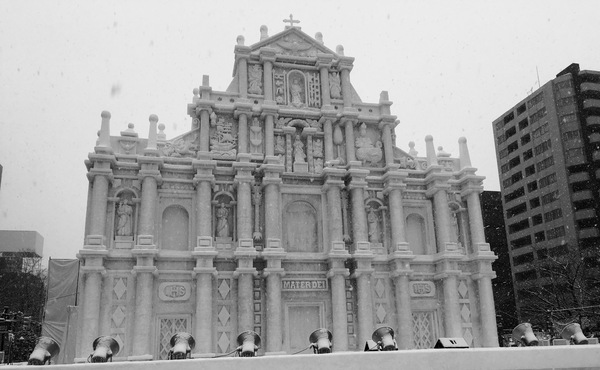ELSI Blog
129 The frozen city
The most exciting part of attending the 4th ELSI International Symposium was the ability to walk down the street.
OK, perhaps that is a slight exaggeration. I had just stepped from a debate on whether the young Venus had ever hosted oceans; a key question for assessing the habitability of worlds beyond our solar system. That was hard to beat. But there was no denying that walking was exciting.
I had travelled to Tokyo from Hokkaido University, situated on Japan's northern island in the city of Sapporo. The town is famous for beer and for its annual snow festival. 
The Sapporo Snow Festival runs for a week every February and attracts over two million visitors, doubling the city in size. Its most famous section consists of life-sized snow replicas of famous buildings and scenes from popular culture. These are constructed by the defence forces of the Japanese army as a training exercise; a slightly alarming prospect considering one of the massive sculptures this year consisted of a Titan from the Japanese manga series crushing Sapporo's historic clock tower. When it comes to war, Japan is apparently prepared for everything.
The location of the snow festival is well chosen. With an average snowfall of nearly 6 metres, Sapporo risks being buried under a white blanket anytime (and often all the time) from November through to April. It is basically the frozen Star Wars planet of Hoth. Weeks of wading through the snow piles outside my apartment door is what made walking freely down Tokyo's streets very exciting.
It is perhaps therefore not surprising that Hokkaido University is renowned for research that features the very cold. 80 years ago, Hokkaido University Professor Ukichiro Nakaya created the world's first artificial snowflake. Then just last year, the University opened its 'Arctic Research Center' to explore the environment and social consequences of the changing climate in the north polar region. Yet, even Arctic research looks toasty compared to the work being done in the laboratories of astrochemistry.
In the interdisciplinary Institute of Low Temperature Science, Naoki Watanabe has built equipment that can lower the temperature down to just ten degrees above absolute zero. He is exploring the chemical reactions that occur on grains of dust suspended in star-forming clouds. At these incredibly cold conditions, it seems miraculous that any chemistry can take place. In a way it is -- Naoki has discovered that such improbable reactions occur via the intuitive-defying laws of Quantum Mechanics; a regime where atoms behave more like waves than particles.
Across campus, a second laboratory is also pushing temperatures down to similar icy depths. This is now the domain of Shogo Tachibana, an expert in the chemical reactions that occur in asteroids. Shogo is a lead scientist on the Japanese space mission, Hayabusa2, which plans to land on an asteroid to bring samples back to Earth. Hayabusa2 was launched at the end of 2014 and has recently swung back by the Earth to get a gravitational kick towards its target, asteroid Ryugu, where it will arrive in 2018.
In the tower block next to Tachibana's laboratory is my group. We are computer modellers and our work is decidedly warmer. In fact, this can sometimes create a problem in the summer months when the supercomputer can generate excess heat. Our group explores the formation of galaxies, stars and planets by simulating their evolution. This ability to test how cosmic objects change in time is only possible with computers, as the timescales involved are usually millions of years!
Both research and the snow festival are international endeavours at Hokkaido. The University works with groups all over the world, while the snow festival has a competition for sculptures entered by different countries. In this year's event, Australia's contribution stopped bystanders in their tracks as they gaped open mouthed as the snow rendition of a naked man being eaten by a frog. As I stood there, trying to keep my eyes off his snowy rear, I could only hope this was not a commentary on what my research was likely to do to me in the upcoming year.
(If you'd like to read a little more about research at Hokkaido, please do browse our new brochure!) Hokkaido University Spotlight on Research












